The California Water Shortage: A Case for Aesthetic Ecosystem and Ecological Design
In recent news, there has been significant coverage of California’s struggle with its below average precipitation in the past several years. Yes, they call it a drought.
Governor Jerry Brown and California State Water Resources Control Board have come forward with restrictions on water use, primarily in urban and suburban areas.
People are ripping up lawns.
Landscape designers are drooling (not too much) over the opportunity to redesign so many areas for better water conservation. Many are replacing lawns with cookie-cutter designed ‘xeriscapes’ or ‘desertscapes’.
Urbanites are pitted against agrarians saying the other is more responsible.
One recent interview on NPR highlights cemetery caretakers wondering “if cemeteries, particularly for veterans, shouldn’t play by different rules than, say, a suburban lawn”?
And now, there’s a struggle between allowing salmon to spawn and the ability of Bay area residents to drink water that doesn’t taste funky.
This is where I follow up with saying, ‘The end is near!’
OK so perhaps I’m making light of the situation a bit. This is a serious situation. But we have gotten ourselves into this mess. We have been deliberately diminishing our water resources in the western US for a long time.
It’s just that the thought of water scarcity is a bit more evident now.
The good news? We’ve gotten ourselves into this mess, and we can get ourselves out. But it won’t be easy and it won’t be painless. Those in California are already beginning to feel the pain.
But change needs to happen. The current system cannot and was not designed to support itself. We have designed our landscapes and buildings in water sensitive areas with little thought to responsible design and responsible water management.
Additionally, it is not just those in California that are responsible here. Our economy has promoted the continued depletion of California water resources with our purchasing habits. I certainly have purchased vegetables and nuts from California, and I am willing to bet that you have done the same.
So if I’m so smart, what is the solution? Well first, we need to understand –
What is the problem?
Is it nature? After all these years of reliability, it has decided to turn its back on us. Really? Come on.
Perhaps it’s a manifestation of ‘climate change’?
Is it that humans shouldn’t live there?
How about a design problem? Yeah, let’s go with that.
This is a failure of responsible, conscious design.
Since pre-industrial times the area that is now the state of California has encompassed some very water sensitive areas. By this, I mean that there are some areas where water is not freely flowing within close distance nor falling from the sky on a regular basis.
Yet as the population of California grew, we have adapted nature to fit our needs. We dammed rivers to build up huge reservoirs to supply water. We tapped into ever deeper groundwater systems. We built canals, irrigation lines, and pipelines to carry water across miles, and then hundreds of miles.
Such a precious, necessary resource.
And then supply was no longer an issue. We had all these wonderful systems in place – feats of modern engineering. So we built elaborate landscapes to look like the Midwest and the sub-tropic regions. We established endless acres of plantations fed by massive, intricate irrigation systems. And then we became addicted to our landscapes and dependent upon our farms.
And there is the problem.
We have built systems that treat the fresh water of the west as a vast, endless commodity, assuming that there will always be more available.
The snows would always provide new steady melts each year. The groundwater systems would replenish themselves. And the rivers would always flow from greener lands.
But they aren’t vast and endless. We have drained fossil aquifers that won’t refill themselves for unthinkable lifetimes. We have sucked rivers dry.
This is not the first California drought, and it won’t be the last. In fact, official drought conditions occur about every 3-10 years in California, with various levels of severity. So why the big deal now? As I just stated, we have sucked rivers dry, we have drained fossil aquifers. Our reserves to weather these droughts are diminished. That diminished reserve, combined with the increased draw on the water systems gives us our current predicament.
How much longer can we allow this to continue? It appears that we will allow ourselves to continue this process until no longer economically viable. Yes we are seeing California water restrictions put in place by the government, but they are reductive restrictions. In other words, we are moving from chugging our cup to drinking our cup – while it is only being filled by a slow drip. We will eventually reach the point where any further restriction will no longer ease the situation.
There has been significant debate as to where the blame lies in this situation. The current California water restrictions are only being placed on urban areas. This means lawns, showers, washing machines, drinking fountains. Rural areas are out of scope.
There are certainly two sides to this debate. On the one hand our agricultural system in California ‘feeds the nation’ and has commercial importance, while urban areas only use water for lawns and household use. On the other hand, big agriculture has pressured urbanites to take the toll for overuse of the water systems while they continue unabated.
For example, there is passionate debate around almonds and how much water they use (supposedly 1.1 gallons per nut), with heated defense about how many by-products almond trees produce and how agriculture is the fuel for California’s economy. Notice I am not outwardly supporting either side of this debate.
Before any tempers get heated here, let’s take a step back and think rationally.
In rural areas, we have wide open fields where water is pumped – often through open ditches or old irrigation pipes – to massive open wind-prone fields with high solar exposure. There, the evaporation rate is high, and the possibility of runoff is also high. Nut plantations and orchards have trees spaced evenly in isolated row formations with bare, exposed earth between. The irrigation demand for such trees is incredibly high in conventional agricultural design.


Agriculture utilizes 80% of the state’s water supply, according to the California Department of Water Resources.
Look, the number speaks for itself. No need to cast blame. Instead, let’s look at this from another perspective. Our agricultural system has a severe dependency on imported water. This is clearly evident for our farmers in California.
Rather than continuing to fight for diminishing resources, we should instead build resilient agricultural systems that can thrive in any climate.
Simply because urban areas only account for the remaining 20% of the state water supply doesn’t mean they’re absolved of responsibility. Not blame. Responsibility. We have lawns in California that are irrigated to look pretty. And then we cut them so they look good. Don’t get me started. Likewise, many plantings are established that are not adapted to the low water conditions of the site. Our in-house water systems are designed for single use before exiting the house to a sewer and treatment system.
If we as a society operated with more foresight and long term consideration, we would realize we are destroying the future of our children and their children for our own benefit today. Sound crazy?
Think of the hurt we’re in now. Now think what it would be like in 40 years if we continue on this same path: you tell your grandchild how you used to eat strawberries and carrots year round from California and Mexico. They ask you where all the water came from. You tell them they used to pump it from the ground and that there used to be a river that filled up a bunch of lakes. Where did it go they ask? Well we grew a lot of food with it. ‘Why didn’t you save any for me?’ …’I don’t know, dear, I don’t know.’
So yes.
We are stealing the water from our neighbors and children for our own benefit today.
Altogether, we have a massive opportunity here more than a problem. Sometimes it takes a little discomfort or pain before the need is fully understood. Well consider this our pain. It is now time to redesign the way we live and thrive in water sensitive regions.
So let’s talk solutions.
One word could summarize the solutions proposed here: responsibility.
With more responsible management of our lifestyles, we can not only preserve water resources for future generations, but also rebuild the resources we have taken to yield a system of abundance.
As agriculture is the primary drain on the water resources – pun intended – let’s first look at solutions with the California agricultural system. I could write books on this and many already have, so I’ll try to summarize quickly.
Large-scale agriculture with row cropping of giant monocrops and synthetic fertilizers and pesticides is dead. It’s antiquated and naïve. Many just don’t know it yet. Industrial agriculture is being pumped full of support by big ag suppliers as the solution to feed the world, while we massively deplete our soils and water resources. It provides inferior quality foods with poor nutrient content from weak, disease prone plants. It’s a natural biological system being treated as an inert chemical system.
Think of growing a plant like the human body.
We have been treating the human body in a similar way over the past century, looking into drugs that have been sold to us as a universal cure. Take antibiotics for example. First, they were touted as this great and wonderful thing. And they did work wonders for a while. Then they’re overused. Then we begin to realize that the body and the microorganisms living within the body may be very important to overall function. And those antibiotics can greatly disrupt the productivity and balance between the human body and its microbial community.
Similarly, agricultural systems are living systems that are a reflection of the systems they grow within. Derived from a natural state, plants and soils are evolved to live in diverse communities with each other. When you isolate plants from their natural system and disrupt their connection with healthy soils, you end up with disease-prone systems that require heavy inputs to produce a yield. This is our so-called advanced modern system.
There are several sustainable agriculture practices and systems that have been developed over the past fifty years and many others that are rooted in ancient cultures.
When it comes to the problems in California, permaculture is a solution to these problems.
As defined by its cofounder, Bill Mollison:
“Permaculture is a philosophy of working with, rather than against nature; of protracted and thoughtful observation rather than protracted and thoughtless labor; and of looking at plants and animals in all their functions, rather than treating any area as a single product system.”
In my own words: Permaculture is a design science and philosophy that focuses on designing regenerative systems with minimum long term inputs and maximum sufficiency and yield.
For those of you that have never heard of permaculture, it is more of a mindset and a systems understanding rather than specific tools and tactics.
For those of you that have heard of permaculture and may think it isn’t practical, profitable, or applicable to California – think again. This is a proven system in more climates than conventional agriculture. Regenerative systems have been established in some places for thousands of years, providing a yield year after year. And permaculture models are in place for profit already.
Rather than further explain what permaculture is and how it works, I am going to provide resources where this has already been done in some manner. There simply isn’t the space to fully explain here.
Permaculture systems are built to work with the land, ecosystems, and soil.
Rather than being a system of extraction, permaculture builds resilience. Resilience builds diversity. Diversity yields abundance. Abundance yields surplus. There is always a return into the system to allow it to regenerate and rebuild.
Such systems have been established in nearly every climate, from cold climate to desert climate. So if you’re thinking we can’t grow without irrigation in California, think again.
For an example of cold climate systems, check out the work of Ben Falk of Whole Systems Design in Vermont. In short seasons, he has produced large abundance. More info here, and this TEDx talk:
Permaculture agricultural systems have been built for profit here in the US. The key is diversity and multiple systems of yield. Check out the work of Mark Shepard of New Forest Farms in Wisconsin.
Mark has multiple yields each year. To name only a few: chestnuts, grass-fed beef, pastured pork, apples, mushrooms, cut flowers, peppers, and hazelnuts.
[Shepard] believes this approach will be crucial for farmers facing the unpredictable, potentially destructive weather of the future. ‘This summer was the driest on record in our part of Wisconsin and we had the finest cattle and hogs we’ve ever had,’ he says.”
But California’s dry – way drier than Vermont and Wisconsin. There’s no way that would work in California.
Check out these swale systems implemented by the Civilian Conservation Corps in the 1930s outside Tucson, AZ, where the average yearly precipitation is 11.8 inches:
These swales are passive earthworks that increase water absorption into landscapes and support soil health and plant growth. Here is a view of these same earthworks in Google maps, compared to the surrounding landscape. Swales are just one tool that, if used properly, can help form the backbone of a well-designed and water-conscious system.
Permaculture teacher and designer Geoff Lawton has proven time and again that permaculture can build resilient agricultural systems in incredibly harsh landscapes. Geoff designed one project in Jordan, one of the most water stressed regions in the world, with less than 4 inches of rain annually in this location. If abundance can be achieved here, it can be achieved in California.
Here is a video teaser on the results of Geoff’s Jordan project:
These systems are proven, they are abundant, and such system design is ready for widespread implementation. We must educate ourselves, think long term, and build resilience into our agricultural systems.
Agriculture in California will eventually die without regenerative systems design.
Here’s what will happen if we don’t change how we produce food in California and other water stressed areas:
- Fossil aquifers will continue to be drained until they cannot be used again for hundreds of years or more.
- Rivers will continue to be sucked dry in the region.
- Water will be pumped over hundreds of miles at great expense.
- Water rights will become a major politically and economically divisive issue.
- It will no longer be economically viable to support conventional agriculture in California
- Farmers will look elsewhere or we will become dependent on foreign systems.
- The land will be stripped bare, salted, and desertified.
And here’s what will happen if we do change to a resilient permaculture model of agriculture:
- Water will become less of a scarcity issue and a more available resource
- Natural systems will be returned to the land, including rivers
- Farms will produce a wide variety of perennial and annual yields for greater year-to-year stability
- Systems will be designed to fit the needs of the region, not the other way around
- We will become less dependent on the high labor and highly variable yields of annual crops
- We will become more supported by low input and steady yields of diverse perennial and annual systems.
- Soils will become healthy and support higher nutrition in harvested crops
- Pest problems will be reduced
- We will become less dependent or independent of synthetic chemical fertilizers and pesticides
- Erosion will be reduced
I think you get the picture.
Permaculture requires thoughtful design up front, coupled with initial work to implement systems appropriately. The long term payoff is witnessed in the above examples and resources.
As we solve the design challenges of modern agriculture, we can also look to our cities for responsible water-conscious redesign.
Across much of the United States the majority of homes, buildings, and properties are designed poorly from a water and energy efficiency perspective. Here, we’ll just be focusing on the water efficiency.
I have already written on the benefits of responsible stormwater management in previous posts. These posts contain a wealth of information on this subject that I would recommend reading if you haven’t already had the opportunity. I will try not to duplicate too much here for the sake of reducing your eye strain.
Step 1: Building interior.
The interior of most buildings are designed with the expectation that water will always be available. That is, they were designed with modern central plumbing entering the building at one location, and a sewage plumbing line exiting the structure at another. It is a one-way system with one entry and one exit point, just like a human digestive tract. Clean stuff in, dirty stuff out.
Such a design obviously has its hygienic benefits and rightly so. However, this design is also predicated on the assumption that water is abundant and expendable. Not always so, as we are seeing.
So how do we adjust our design process to better preserve our water resources without compromising hygiene, utility, or convenience?
Reusing ‘Greywater’
First, we utilize water as many times as possible in our systems. Any water that goes through a faucet often needs to be as clean as possible if there is potential for it to be consumed. But beyond the sink, we can design systems that take once-used, relatively clean water and recycle it for bathing or toilet use.
After passing through the dish drain or shower drain, the water is drained into a receptacle for toilet use. Care would need to be taken that large particulates do not enter the drain, but otherwise this effluent should be able to fill toilets through gravity feed or pump pressure. This stage of the reuse cycle has already been successfully implemented in many households across the world.
The reuse of previously used water to flush toilets can save a significant amount of water in a structure. This reuse of a lightly used water for another purpose is often referred to as ‘greywater.’
With our chlorinated municipal waters, it is quite possible for us to look into other ways to repurpose once-used water in the household. If it is used for general handwashing, what is the risk to use the same lightly soiled, lightly soapy water for showering or dishwashing?
Redesign Pooping
Think about it. We pipe clean, drinkable water into a device. Into this device, we drop our depth charges, follow with some TP, and add some liquid ammonia. Then we send the wonderful mix on its way to a treatment plant (if it doesn’t overflow into a creek – yes that really happens in storm events).
Yeah. It’s gross. But let’s face it. Even if you’re in a region where there’s 40” of precipitation per year, this is kind of a waste. Right? Come on. But we also do the same thing where there’s 10” of precipitation per year. So what can we do?
I think it’s time we get creative here and come up with some robust, simple designs for handling sewage and processing it into something beneficial for the environment. I’m not claiming to have the end game solution here with this, but I think it’s possible.
We can safely land on the moon. I’m sure we can safely land a deuce into something other than water.
My first thought here is the composting toilet. They have come a long way in the past few decades. I’ve used one before. They may take a bit of getting used to, but they work. And with some the end product is clean enough to throw in your garden.
I know, eewwwwww.
Now that it’s out of our system, let’s think practical.
Composting is the process of breaking down organic material into reduced, bioavailable nutrients. Hot composting eliminates pathogens. This would of course be imperative in a system where the composted human waste were used as an end product on the property.
Again, I don’t think we’re quite there with composting toilets for widespread and safe use, but I think we are getting close.
Rainwater Inputs
Next step, we can use collected rainwater for use inside the building. For households, this water can be used for showering, handwashing, or toilet use. Pretty much anything except ingestion. Of course this rainwater could even be ingested with appropriate treatment.
In California, we have the advantage of a warm climate for outdoor shower use. These outdoor showers can use collected rainwater that can even be heated with a passive solar water heater. Once used, the shower water percolates into the responsibly designed landscape to nourish the local plants and replenish the local aquifer.
In large multi-story buildings we can also use such water to our advantage. Because of the additional height, when water is collected at the top of the building we have built-in water towers that can feed into the plumbing at lower levels.
Greywater Outputs
Using greywater in the landscape is already a common practice that has been well developed and accepted. This Old House even aired an episode is San Francisco back in 2012 where they installed a greywater laundry system with slow drip irrigation (skip to 2:35). In my book, if This Old House airs it, it must be official.
The most beneficial systems for the landscape have staging areas in the landscape that help filter any toxins or foreign materials before entering the main landscape area. For example, greywater still has trace chlorine from the city supply which is toxic to plants. There are small particles of synthetic fibers from laundry, and leached toxins from fabrics. All of these can be filtered by certain plants that are especially adapted and resilient.
Large buildings can also use greywater to feed the surrounding landscape. The installation of such systems is worth the initial design input by allowing a passive irrigation to the landscape.
Step 2: Building Exterior
The building exterior does not exactly require the use of water, but can be an asset for the collection of water and percolation of water into the landscape.
Similar to the interior plumbing, exterior surfaces of a building are designed with the assumption that water is abundant and endlessly available. What I mean is that buildings are designed with the intent of protecting the interior from the elements and shedding water away from the building as quickly as possible.
Instead, we need to design our buildings in a way to utilize their advantages. Built structures have a large footprint where plants do not grow. Thus, they have a large surface area where water can be collected and sent to the areas where plants do grow.
Again, much of this was already covered in previous posts – look at the urban stormwater mitigation post – so I won’t cover it in too much detail here. This article is already way longer than I anticipated.
The Roof
The roof can serve two functions.
First, it can be used to collect rainwater and hold it high, where it will retain potential energy and have increased water pressure at lower levels. This water can be used for the plumbing, as mentioned already, or can be used to irrigate the landscape.
Rather than allowing the water to run into the landscape or sewer as quickly as possible during a rain event, its kinetic energy is turned into potential energy and allowed to percolate more slowly to maximize intake and efficiency.
The second option is to install a vegetative roof or ‘green roof.’ These systems likewise allow retention of rainwater and reduce overflows from the landscape – maximizing absorption. Green roofs also have added benefits to the building by providing a cooling effect in warm weather and an insulating effect in cold weather.
Additionally in some areas, building roofs are being converted to green retreats – designed as an aesthetic getaway area or as a vegetable garden area. These designs add an additional function of a pleasant experience to a formerly unused space.



The Walls
I’ll be honest here. There’s not tons that can be done with the walls to help with this water situation. But I still wanted to point out some ways that the sides of a house or building can be redesigned to still help with runoff, as well as provide some insulating or exposure benefits.
In large buildings, precipitation still hits the side of the building unless there is absolutely no wind during the precipitation event. This provides an opportunity to catch additional water. While water catchment on its own would be helpful, that alone is a bit boring in my opinion. To add additional interest and function, planting structures can be put in place to utilize this additional layer of catchment.
Here’s how it would work. A structure would have some receptacle – like planting boxes – that can be installed at intervals on the outside of the building. These receptacles are planted with hardy plants that would be adaptable to the conditions of the building. For example, certain parts of the building would have high wind or solar exposure. Other parts may experience the opposite.
In addition, the roof runoff can then be channeled into these receptacles to further delay the water from running off the property.
Altogether, such a practice could be utilized to provide additional shade to a structure in hot weather to reduce heat load.
The same type of design could be implemented in residential areas, simply on a smaller scale. The higher the water sits in a landscape or building, the more times you can use it before it disappears.
Step 3: Landscapes
Ok, so this step is my favorite. Water in the landscape factors essentially into every part of this whole website.
On this site, I focus on building resilient systems in any climate to reduce maintenance, provide visual appeal, and enhance the ecology of the site. The proper implementation and sustainability of these measures requires responsible water management.
So basically what I’m saying is that you should read the content on this site to figure out how to design landscapes to properly manage water for optimal retention and drought resilience.
I’m not copping out here. There’s just so much to cover. So I’m going to give you the best places to start for the most efficient approach.
First, if you haven’t checked out the Getting Started section in the main navigation, this covers the basics of aesthetic ecosystem design and its importance. The most applicable to this section here is the ‘Principles of Aesthetic Ecosystem Design’ article, where I outline specific principles to consider while designing a landscape.
Another useful tool is the email giveaway, ‘Ten Easy Steps to an Aesthetic Ecosystem Design’ where I provide specific tactics to construct a landscape in a more resilient manner. Many of these focus on water resilience. You can sign up to the email list here to get this free resource.
This is where I finally leave off, having provided a specific set of solutions to both the rural and urban challenges facing us with this California drought. I hope this has gotten you thinking about how our landscapes are designed.
I also hope that you feel a call to action. If you live in California – get to work! If you live elsewhere, you are not absolved from following similar principles. There is always some scarcity present at times. Likewise, if you live elsewhere I hope this spurs you to make more conscious decisions in your purchases and what impact they have on our environment.
I want to hear what you have to say about this issue too! You’ve ingested over 4,500 of my words. Time to leave a comment below and let me know your perspective!
According to Darwin’s Origin of Species, it is not the most intellectual of the species that survives; it is not the strongest that survives; but the species that survives is the one that is able best to adapt and adjust to the changing environment in which it finds itself.
– Leon Megginson, late Professor at Louisiana State University at Baton Rouge
Additional Resources:
- GeoffLawton.com – Incredible videos showing what can be achieved with permaculture. Requires email address, but no spam.
- Gaia’s Garden by Toby Hemmenway – Introductory book on permaculture design. Mostly focused on suburban design
- The Unsettling of America by Wendell Berry – somewhat dated but very relevant intellectual discussion on the state of modern agriculture
Photo Credits: Flickr Kevin Cortopassi, Rene Passet, Don Barrett, vhines200, US Department of Agriculture, Stuart Rankin, Ken Lund, Nicolas Boullosa, Alpha, Christopher Porter, Joe, AgriLife Today, Dylan Passmore, oshokim, Erin
Figure: California Department of Water Resources ‘Drought in California’ page 4





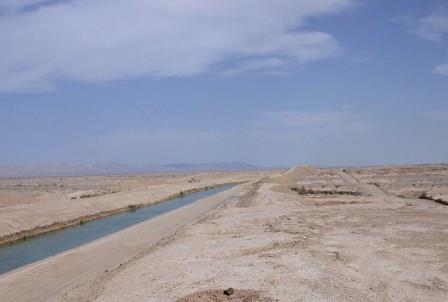





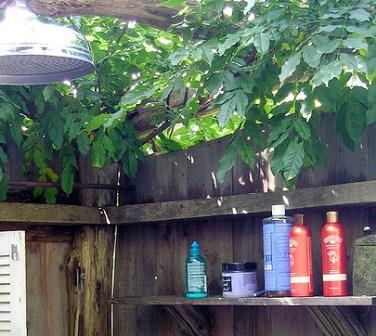
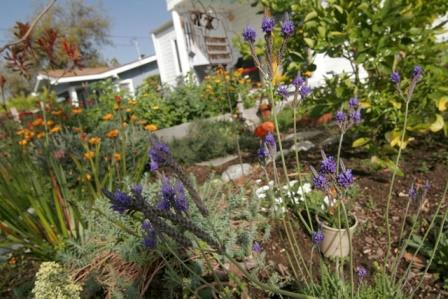

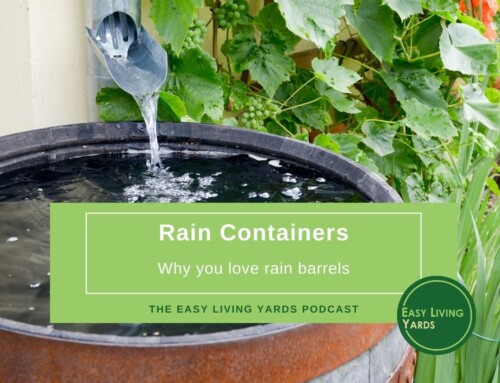





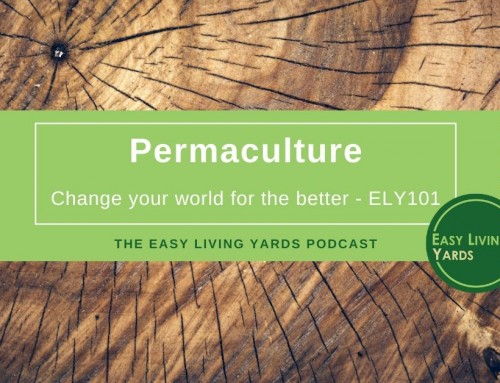

Awesome and thorough post, Ben. Thanks for sharing!
Thanks for reading! I love what I see on your site, great work! From what I can tell, you guys are putting words to action, integrating ecological principles with aesthetic design!